- Created by CAE author, last modified on Sep 09, 2022
In our 2022 Summer release, the Single Room View (SRV) of CAE LearningSpace Enterprise will have a much cleaner, a more easy-to-use user interface on both the Recording and Video Review pages, and by so, increasing efficiency and enhancing user experience.
See what is changing in your CAE LearningSpace Enterprise environment with this new release:
List of Enhancements of the Single Room View
SRV layout re-organized
The user interface of the Single Room View becomes re-organized for more efficiency in the following way:
Re-organized basic layout
- Video player moved to the left hand side
- Annotations and Data Entry tab moved to the right side
- Simulator Control and Layout tab added
- Record control renamed to Recording setup and moved to the top
- Intercom and Video control section moved to the bottom
- Send to Screen option and Simulator Panel added at the bottom
- Bottom panel can be minimized
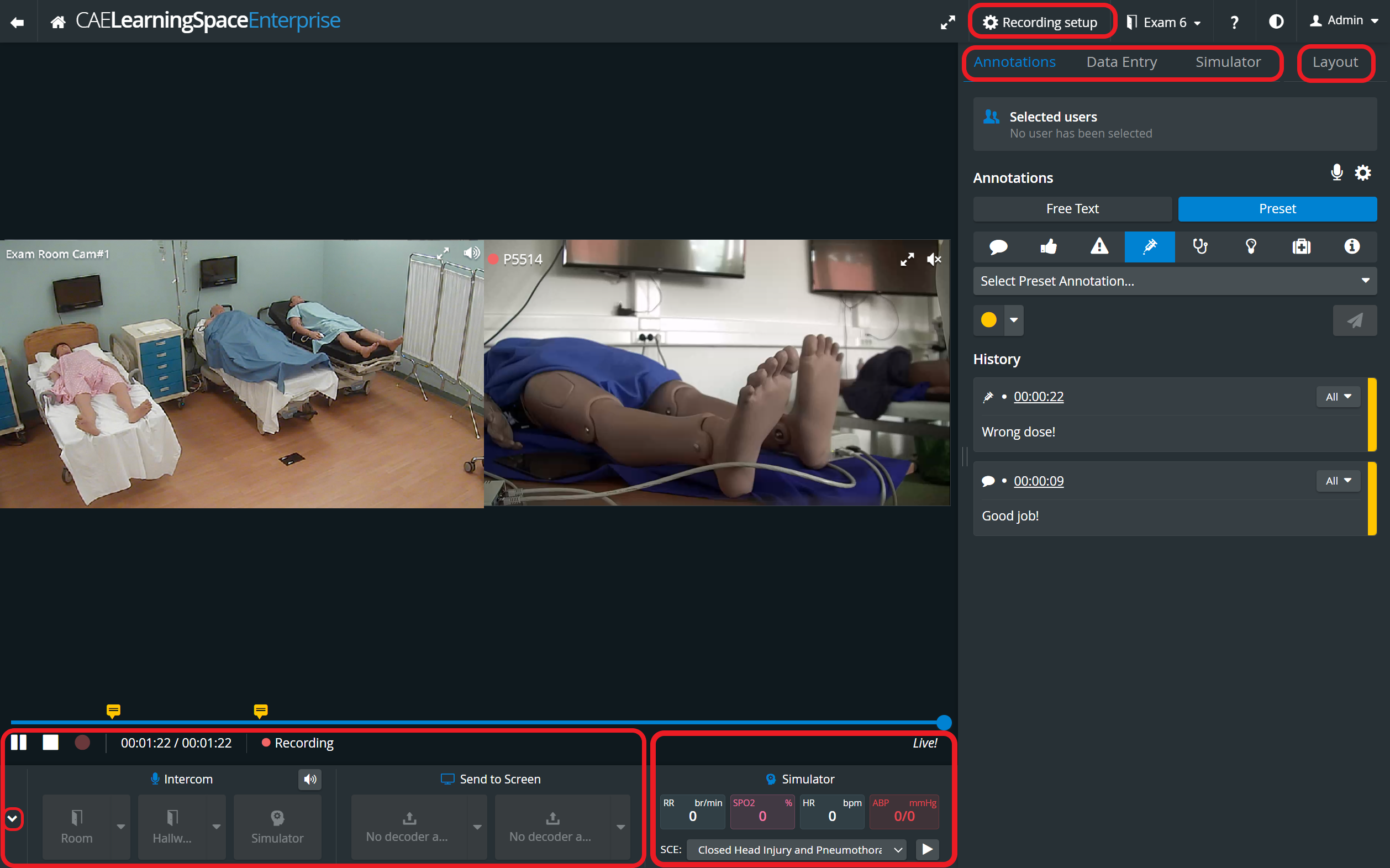
In the new Recording setup pop-up Activity, Case and Participants can be selected for the recording:

Layout tab
The Layout tab can be found on the right-hand side of the Single Room View and contains the Layout settings and the Media section panels.
Important
While the Layout tab is active, the on-screen Camera controls are disabled.

Layout settings section
In the new Single Room View layout, users can choose from the following views to get the most convenient and suitable layout for their aims:
- Double view: 2x1 feeds are displayed
- Quad view: 2x2 feeds are displayed
- Pinned view: 1+5 feeds are displayed, one feed is highlighted
- 3x3 view: A maximum of nine feeds are displayed
- Single view: One selected feed is displayed. Picture-in-Picture view can be enabled by the toggle:
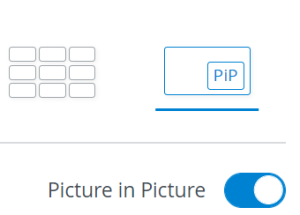
Before saving personalized layouts, all media sources are displayed in the optimal layout for new rooms by default.
IMPORTANT Note
With this new release, Layout is saved as part of the User’s settings and it is no more saved as part of the Room’s setup. This means that, while there is no option to have someone set up a custom layout for a given room to be shared with everyone, each user will see their own custom setup and they will not overwrite each other.
Saving, loading and deleting layouts can be performed by clicking on the cogwheel icon of the Layout settings panel and by that opening the Layout settings pop-up window.
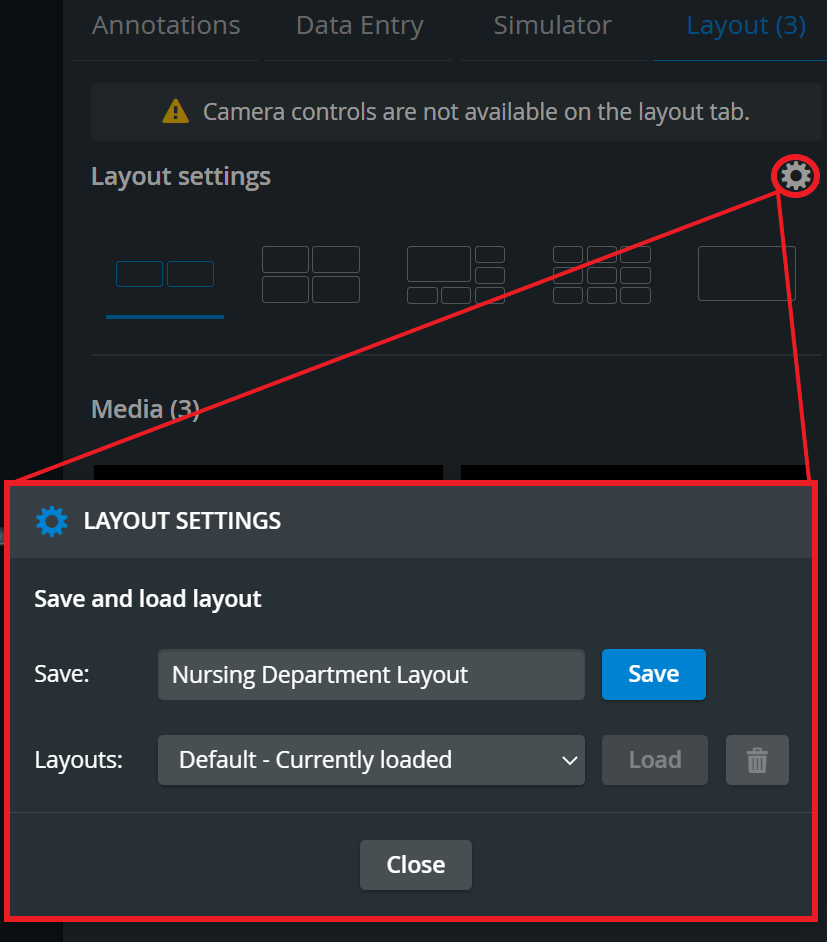
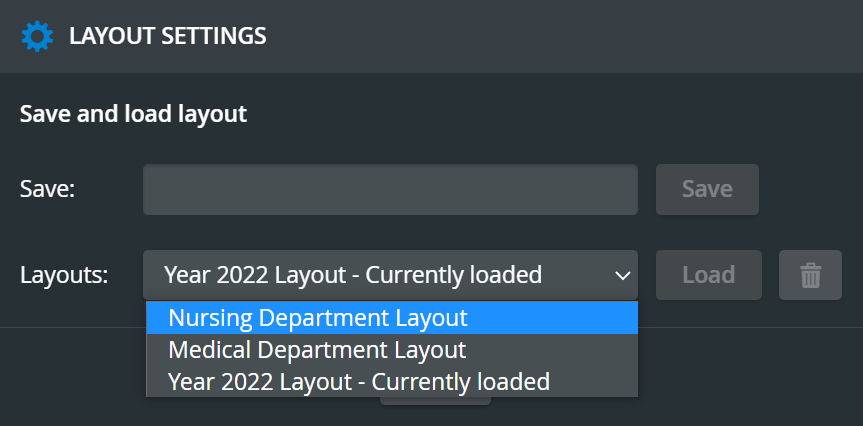
After upgrading to the new SRV, already existing Room layouts will be lost/reset.
Updates to Full-screen mode
The Slider component at the bottom is now available even in full-screen mode.
From now on, the whole camera layout can be set to full-screen mode, not just a single media stream.
Media section
Camera feeds and simulator related media (CTG, waveform and trendchart/patient monitor) added to a room are available in the Media section. Media can be moved to and removed from the video layout - pinned or unpinned - by using the drag-and-drop or the pin-to-layout functionalities. This way, only the selected media sources will be presented to the viewers.
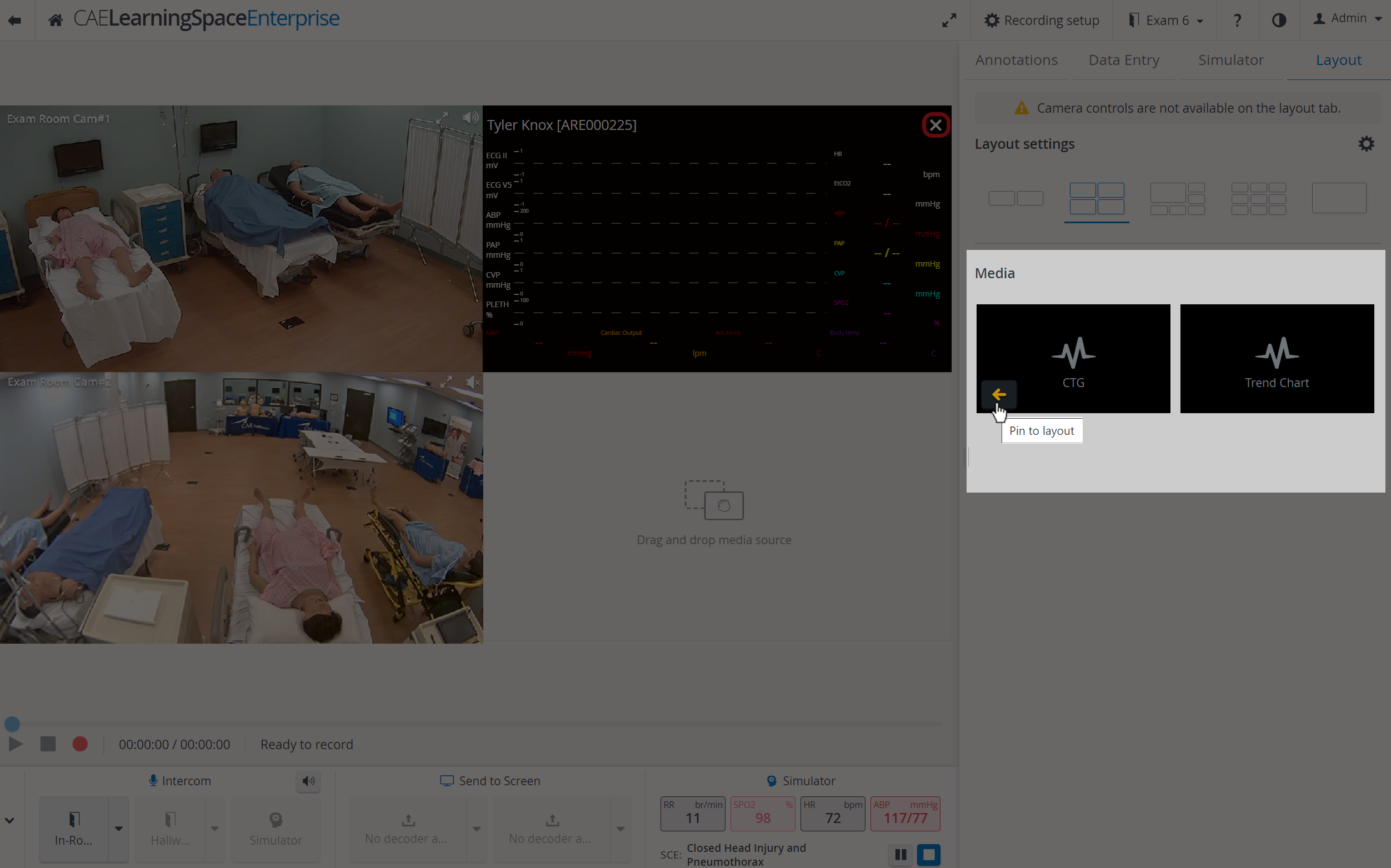
CTG, waveform and trendchart/patient monitor are displayed in separate windows from now on.
Drag-and-drop
Media sources (camera feeds, physio apps) can be moved into the video layout or into the Media section as desired, using the new drag-and-drop functionality of the SRV.
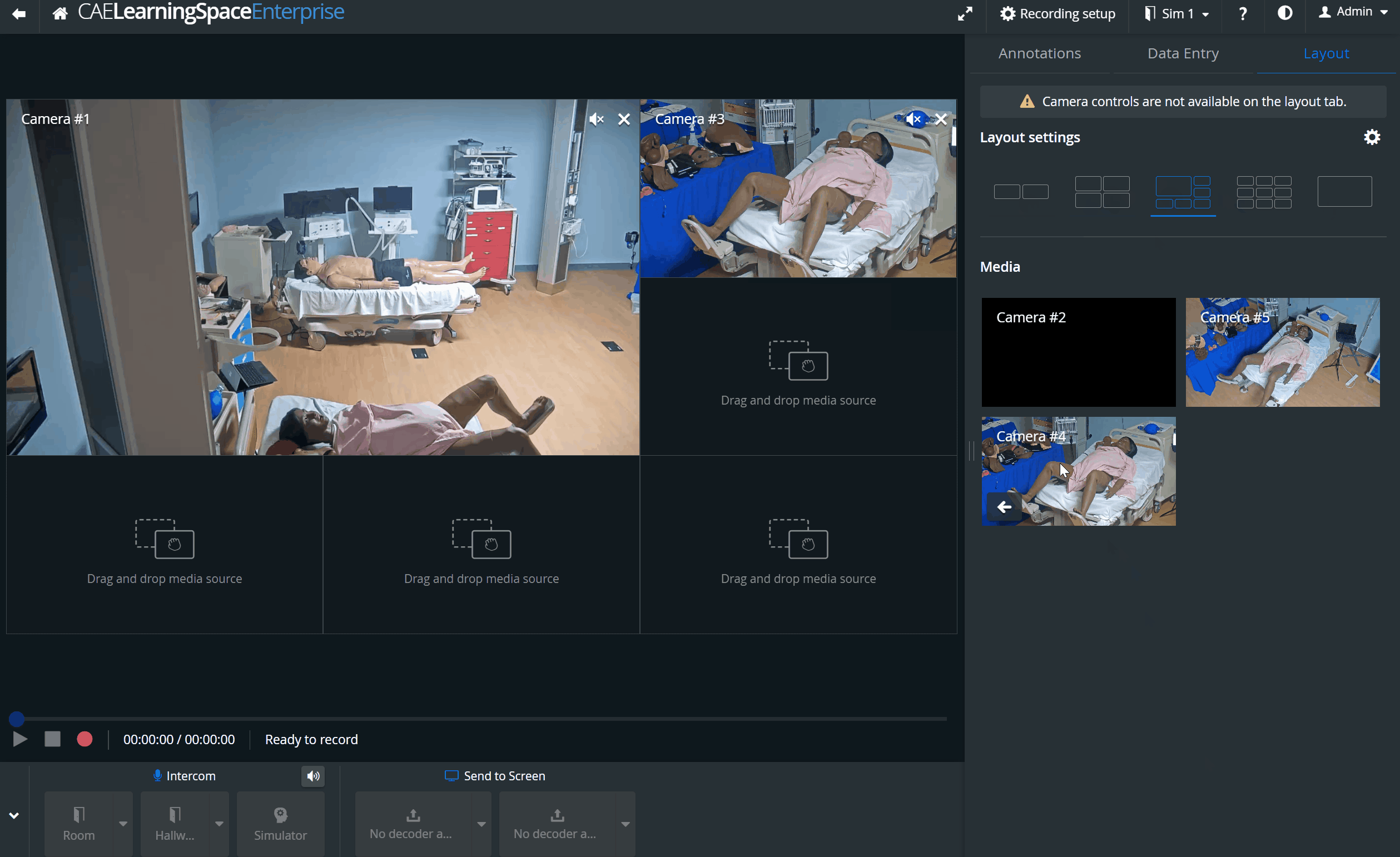
Pin-to-Layout
Media sources can be "pinned" (moved) to the layout also by clicking on the ![]() icon in the respective feed.
icon in the respective feed.
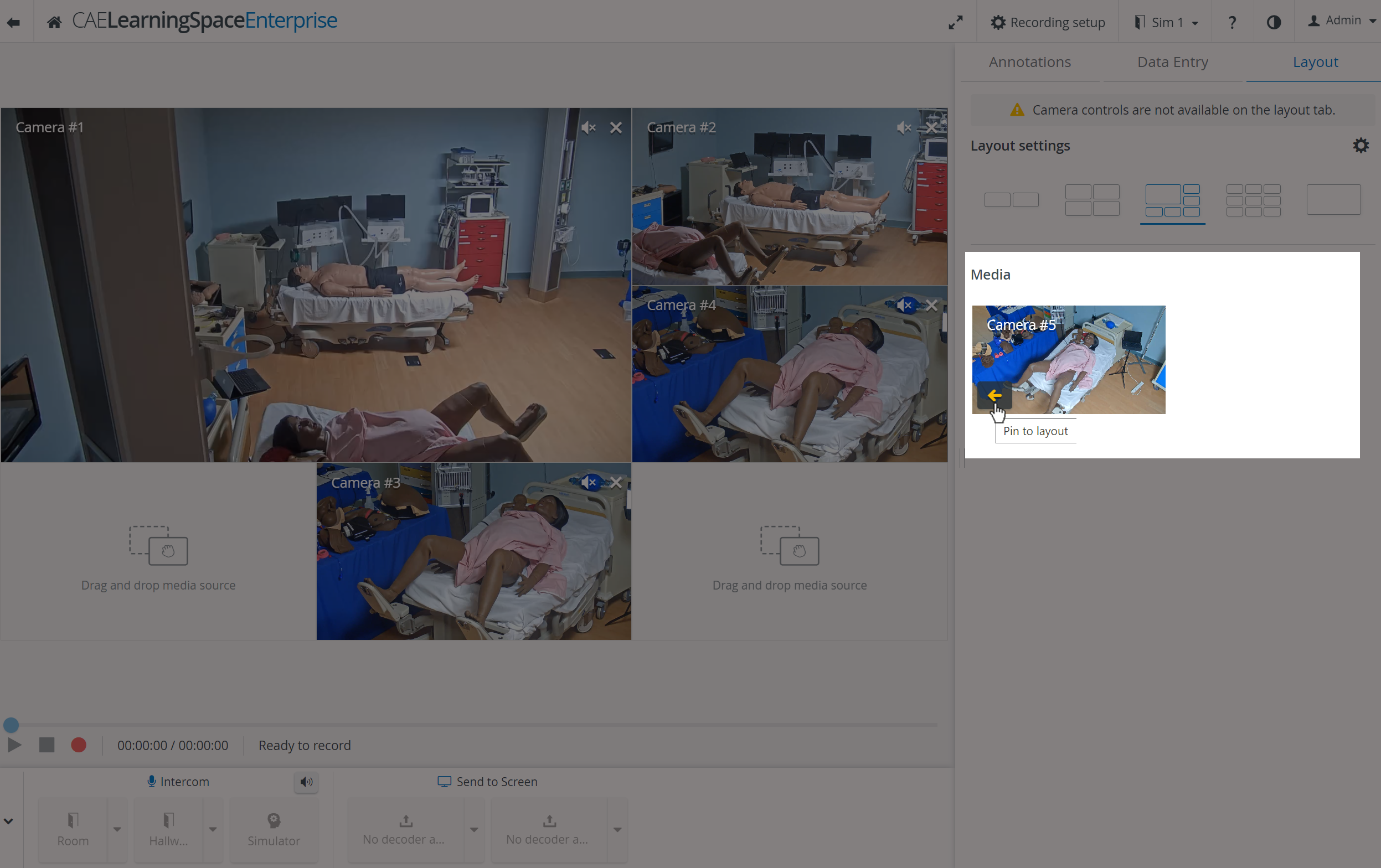
Media can be "unpinned" - removed from the video layout and moved to the Media section - by clicking the ![]() in the right upper corner of the camera/media pane.
in the right upper corner of the camera/media pane.
IMPORTANT Note
By default, recording will apply to all media - whether added to the video player section or not. This can be overwritten in the Recording setup section.
Picture-in-Picture
One desired camera feed or media source can be displayed in a focused way, while the rest of the media sources (a maximum of four) can be displayed in the corners of the video layout.
Media sources (camera feeds, physio apps) can be moved into the layout or into the Media section as desired, using drag-and-drop or pin-to-layout.
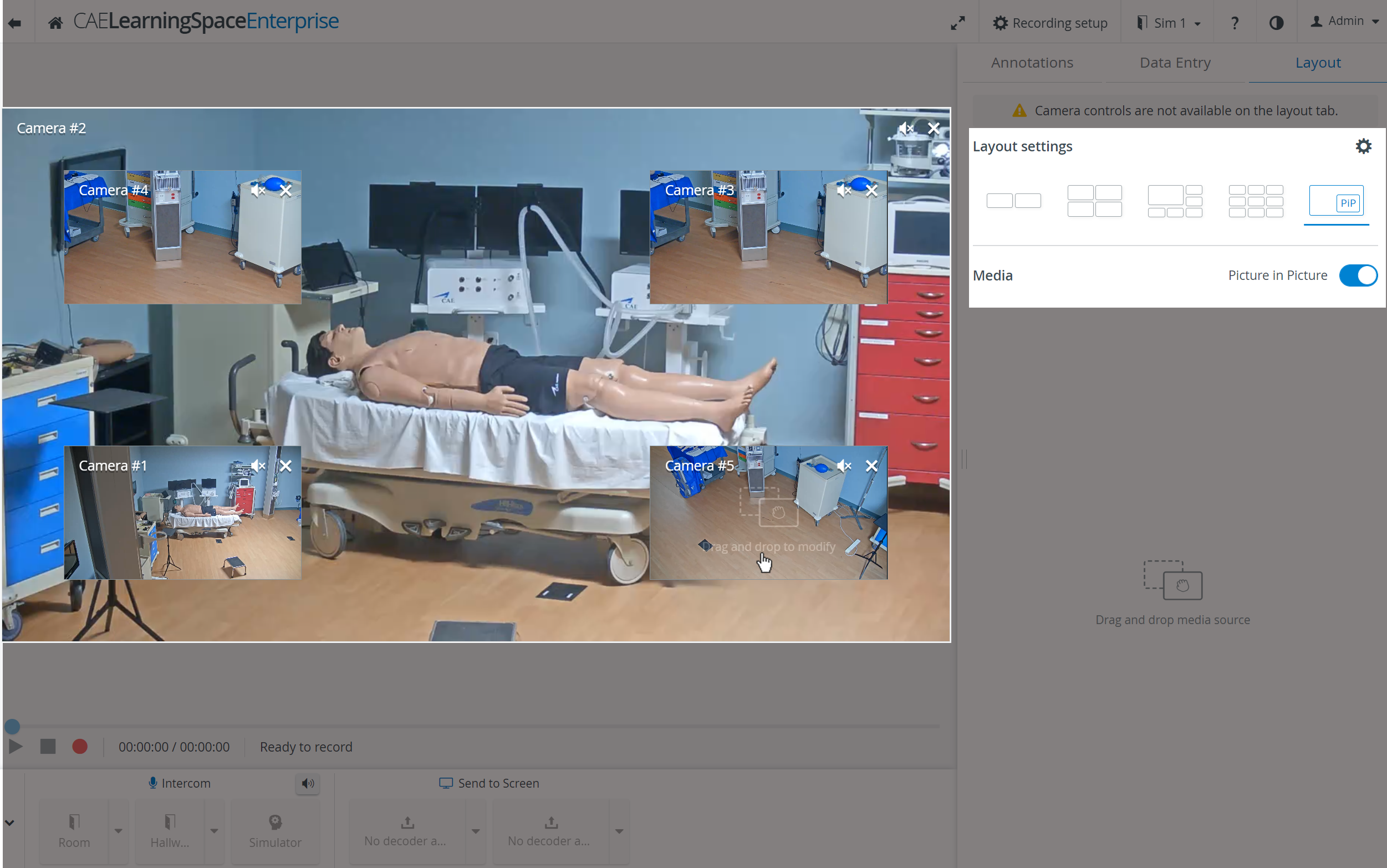
The Picture-in-Picture toggle is only available in the single Layout view.
Annotation section re-designed
From this new release, LearningSpace users can
pre-select the color of a free-text annotation
- pre-select the color of a preset annotation
- change the color of an annotation under History
- choose a category for an annotation/preset in an easier way
- see the "All" phrase on the card, if an annotation is added to “All learners” (the name of all learners will not be displayed separately on the annotation card).
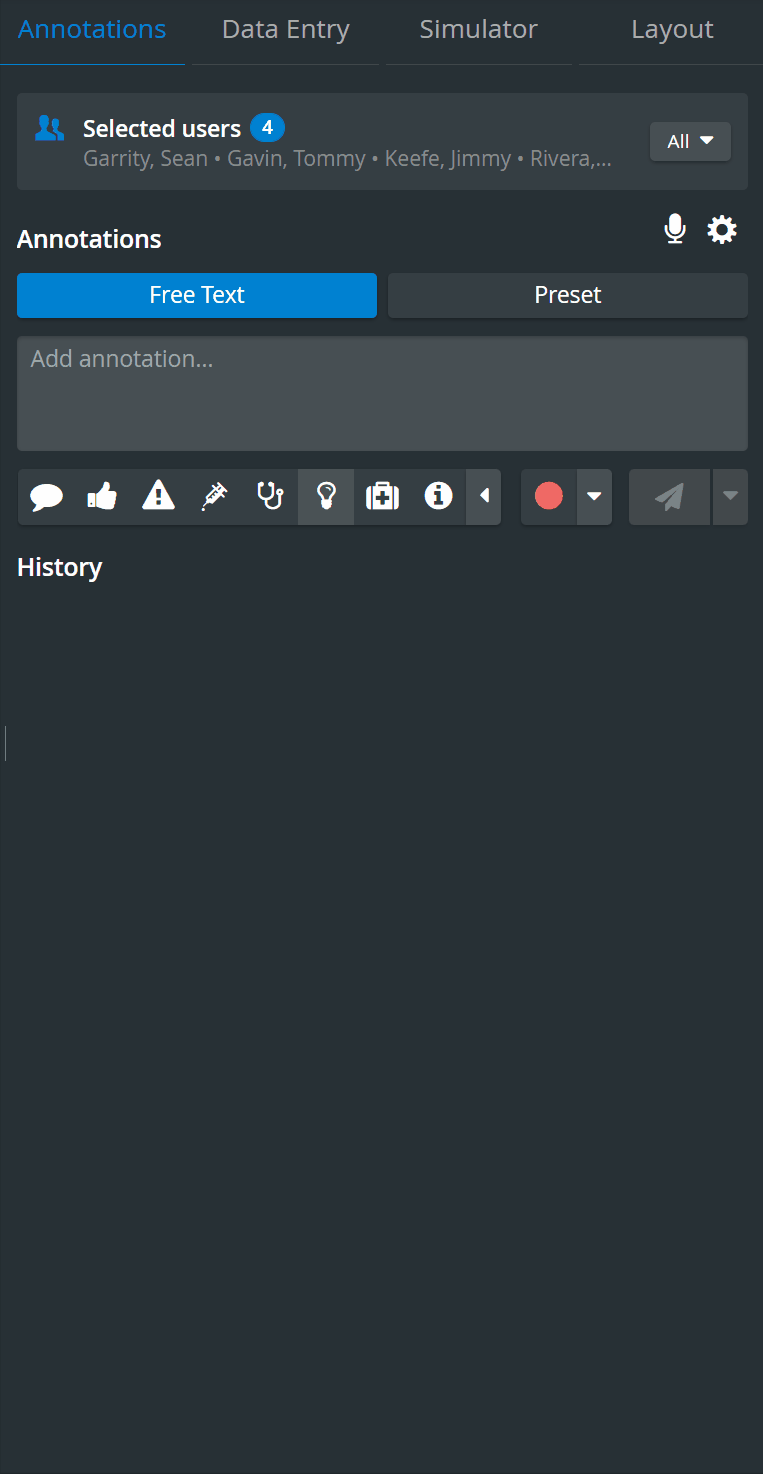
The color of an annotation can be changed by clicking on the colored right-hand margin and selecting a different color from the color-selection.

The timestamp of an annotation will represent the time of the first character typed into the annotation's input field.
Color name of annotation
The name of the color of an annotation is displayed when hovering over the annotation on the timeline to comfort users with color-detection challenges.
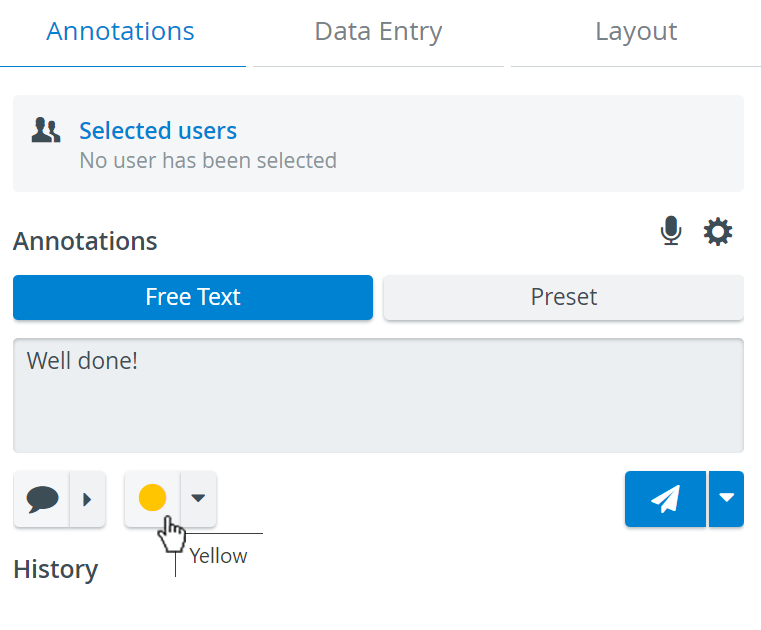
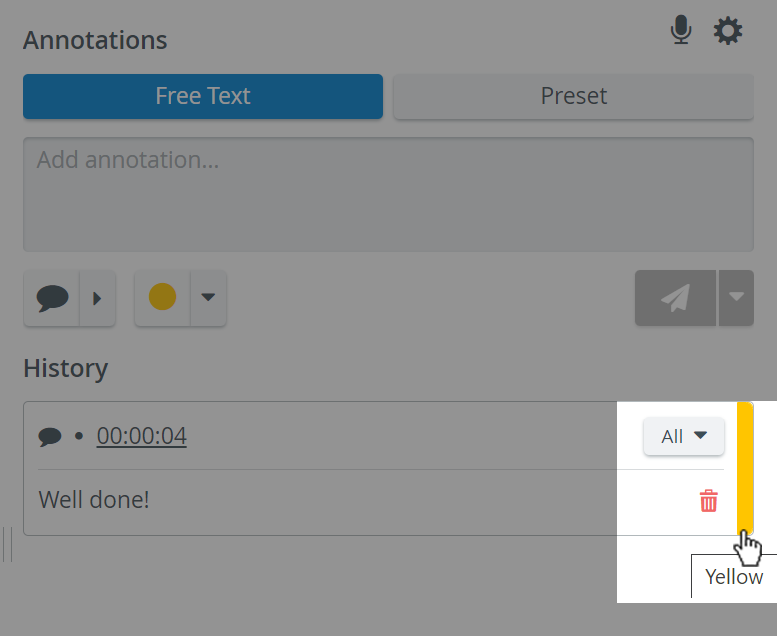
The color names are also displayed for the annotations on the video timeline/slider, where each annotation is displayed in the same color as selected for it in the Annotations panel.


Simulator Control tab
When a simulator is connected and assigned to a room of CAE LearningSpace, the SRV of the Recording module has the Simulator Control tab displayed. Simulation data can be monitored and controlled from here such as: SCE/Case, Current State, Next State (by selecting it from the respective drop-down and clicking ). Also, the simulation scenario can be started/played
![]() , paused
, paused ![]() and stopped
and stopped ![]() on this tab as well.
on this tab as well.

CAE Healthcare simulators associated with a room display their respective Waveform and Simulator Log in the Single Room View and get recorded along with the camera feed when REC ![]() is started. The Waveform and Simulator Log display figures in synchrony with the video feed.
is started. The Waveform and Simulator Log display figures in synchrony with the video feed.
Physio apps (Waveform, Trendchart, CTG) are only recorded if simulation is started before starting a recording.
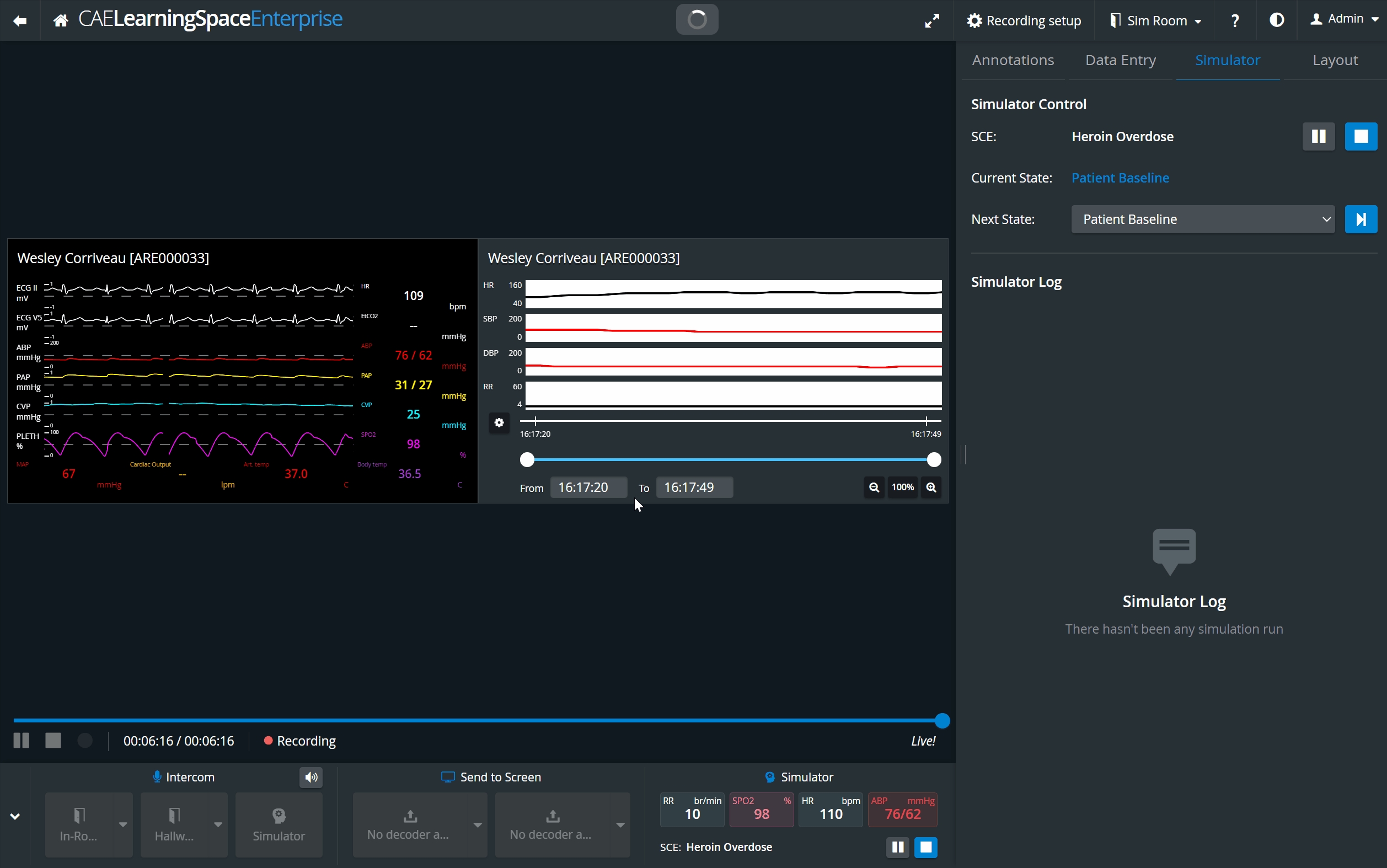
Simulator panel
Simulator panel (widget) is introduced with this release in the Recording panel. When a simulator is connected and assigned to a room, the SRV of the Recording module will have the Simulator panel displayed in the bottom panel.
The Simulator panel provides information about
- the main physiological data,
- the simulation scenario running on the manikin: including the Simulation (SCE) Title, the actual ('Current') and the upcoming ('Next') States.
The Simulation scenario can be
- played

- paused

- stopped

- changed (by selecting another scenario from the drop-down).
- played
The Next State drop-down menu allows for moving onto a selected State. ![]()

Intercom via Simulator

From this release, Intercom can be used via Simulators as well, within CAE LearningSpace Enterprise: announcements can be sent to the simulator's head ("Voice of Patient"), by pushing the Simulator button in the Intercom area.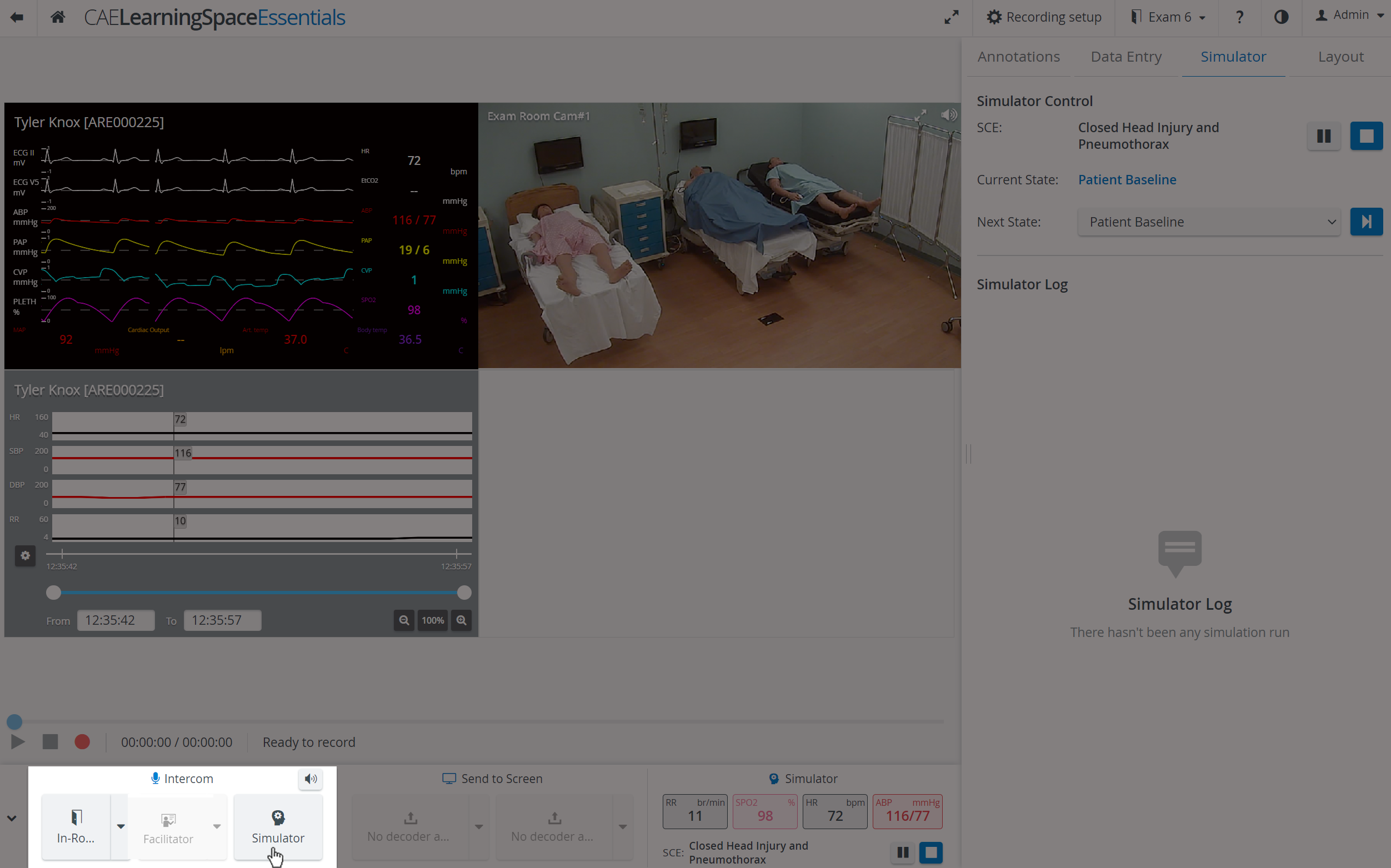
IMPORTANT
The same announcement cannot be sent to the Room and to the Hallway simultaneously.
Send to Screen option
With the help of a decoder, given media can be sent to a display in the room. Although this section is always visible, it is only useful when using Maestro simulators in the room.
Picture files can be sent to different display monitors by clicking the corresponding button. There are two kinds of output for the Send to Screen function:
- display monitor
- TouchPro patient monitor of the Maestro simulator

The Send to Screen option requires the following technical setup to be completed:
- a monitor/decoder and/or Maestro simulator connected and assigned to the room (within the System Manager)
- content uploaded (via Maestro)

PTZ functionalities
With the new release, new ways of pan-tilt-zoom (PTZ) functionalities are introduced to improve camera movements.
On-Screen PTZ: Click in the center of the video
 and pull the camera into the desired direction. The movement of the camera will stop by releasing the mouse.
and pull the camera into the desired direction. The movement of the camera will stop by releasing the mouse.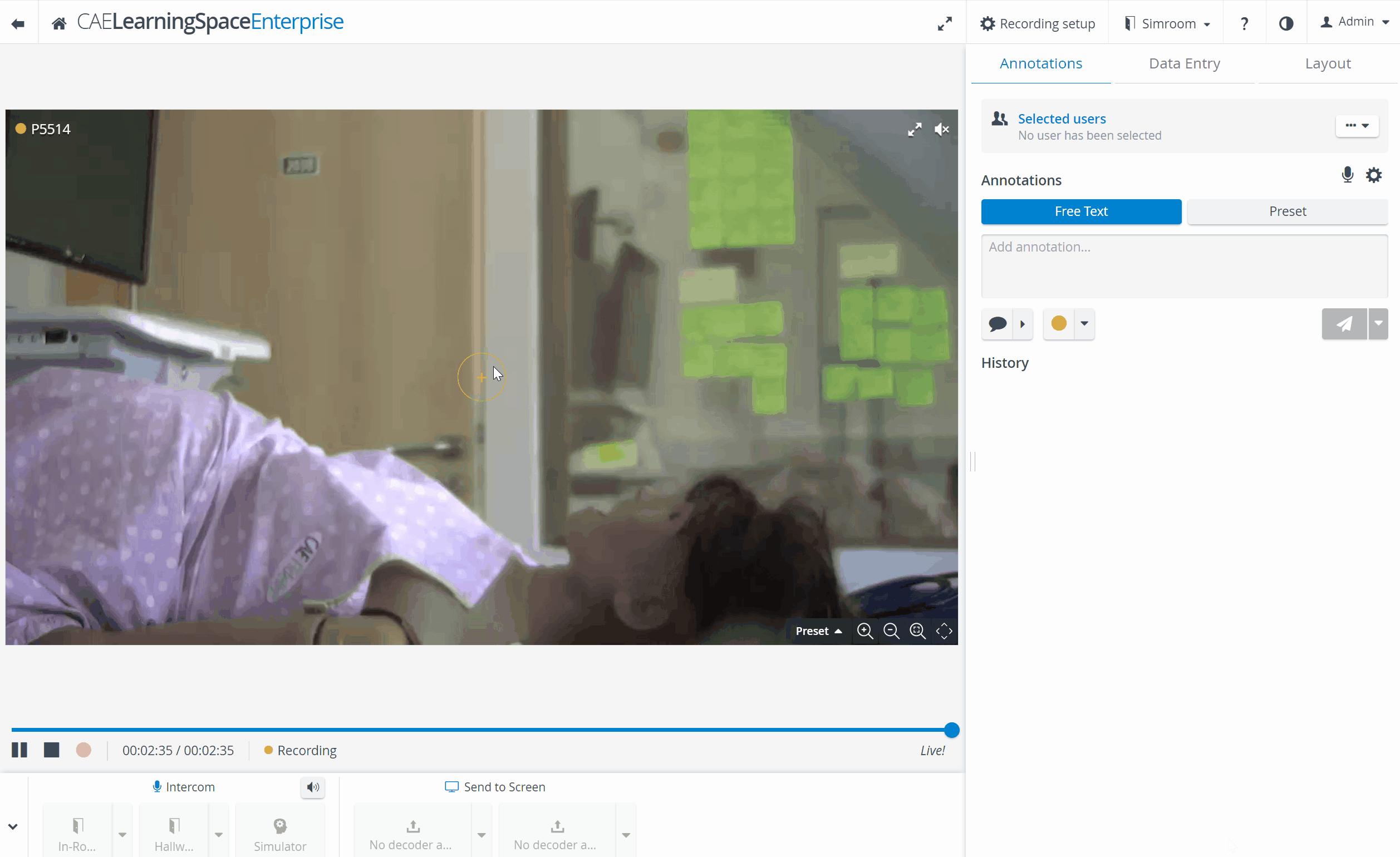
IMPORTANT
On-Screen PTZ is focused on the middle of the screen, thus it cannot be used in the footer and header of the SRV camera feeds.
- Scroll-To-Zoom: zoom-in and zoom-out by scrolling on the mouse.
- Pan-Tilt-Move: camera moves into a direction after clicking into the desired area of the camera feed.
- Area Zoom: camera zooms into the area drawn by the user.

- Move and reset buttons: camera movement can be controlled by the arrows and the magnifying glass icons in the right lower corner of the camera feed. Zoom level can be reset to the default value with the Reset zoom icon.
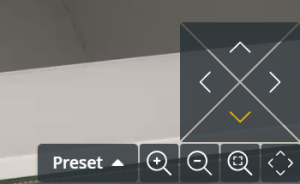

When upgrading to the new SRV - NextGen Room View - already existing PTZ presets will stay intact.
Playback
During live recordings the following enhancements can make video review easier:
- Recording can be paused or played back by dragging the slider to the desired point on the video slider.
- Both current and live timestamps are displayed next to each other in the video record panel. Live view can be switched back to by pushing the Go Live button.

Video can be paused and the slider can be dragged after 30 seconds have passed from the start of recording. Before that time the pause button is greyed out and the slider cannot be moved.
SRV in Video Review
The Single Room View on the Video Review page has the exact same layout as the SRV of the Recording module, with the following differences:
- no Intercom and Simulator widget is available
- no camera control options (PTZ etc.) are available
Information panel is added: by clicking on the More Details link, Simulation details can be viewed (Learners, SP, FON, Activity, Case). This panel can be minimized for more space on the focused content.
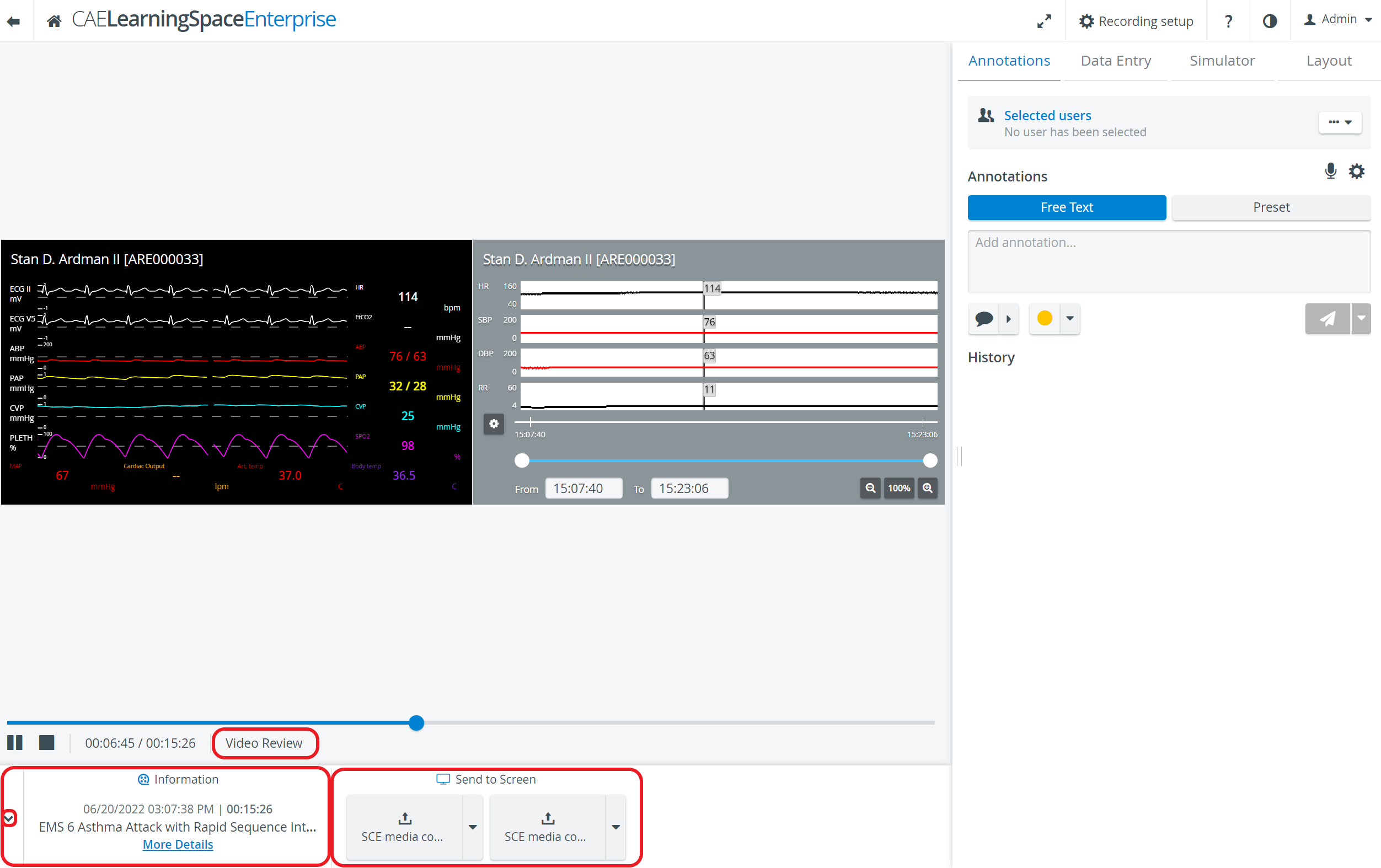
In Video Review, all media associated with the Simulation can be viewed in the Send to Screen panel.
- No labels
